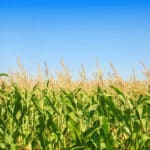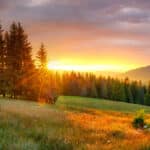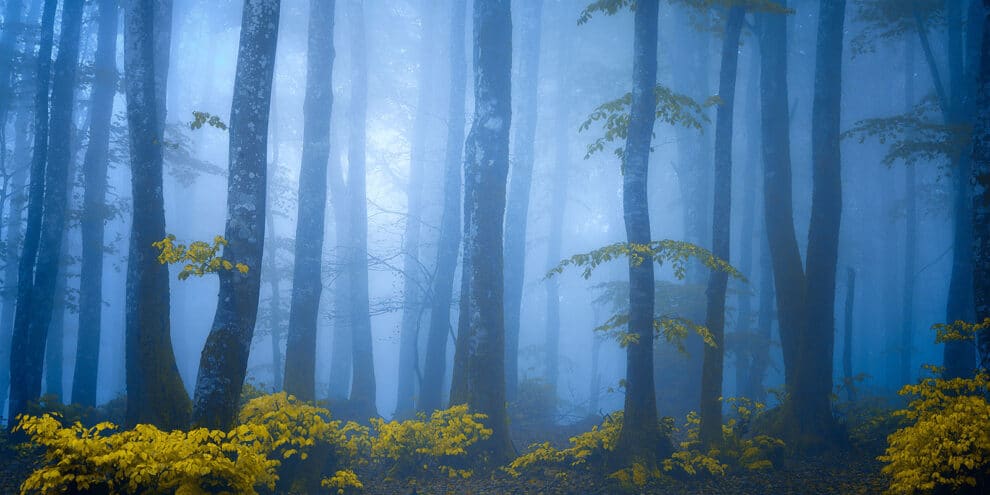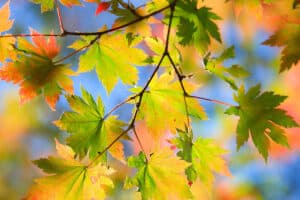The land calls to all of us. Whether it be from a vivid description in a book, from scenes on a hunting or hiking show, from the background wallpaper on your computer screen, or by the high mountains or distant views as you ride rapidly down a large interstate highway. The land waits, ready to tell its story, and for those that listen, to draw them into ecological, historical, and human lessons.
For many, although surrounded by the land and walking on it daily, they are oblivious to the call and totally disconnected. But for others, they will hear and observe. To some people, the early or initial draw turns into much more, i.e., a weekend passion, a decades-long career, or a full-on lifelong obsession with the land. Aldo Leopold said it in his own way in his classic The Sand County Almanac, “There are some who can live without wild things and some who cannot.”
I have been blessed in my forest management and research career to see and work in many of these residual wild places and see the wild things that live there, but I am sometimes reminded that even the land next door can tell a surprisingly deep story.
Earlier this year I completed a timber inventory of a parcel of land just east of Atlanta, a holdout in the ever-increasing commercial development in that region. Tucked away between new housing divisions and estate-level pastures or paddocks, this parcel provided a particularly interesting ‘read’. A very deep, 30-40’ recessed and eroded gully provided evidence of the access road from the 1700-1800s period. Smaller gullies told of skid trails during a period of timber exploitation in the early 20th century. Old nails, ones of substance (real metal and less of today’s more detailed machining), still firmly fixed in red heart pine centers, told of a period of fencing for woods-run cattle in the post-clear-felling, regenerating piney woods. A patch of residual large hardwoods in the 110’ to 120’ tall height class, with multiple age classes present, provided a chapter on reseeding oaks and poplars in the early 1900s and subsequent periodic high-grade harvest passes through the stand over the next 100 years. Piles of hand-stacked rocks told of a hard living eked out of tough red clay and sandy loam soil by lower technology and smaller-scale farmers. A series of soil terraces told of a conservation period in the 1940s to 1960s, one of purposeful and thoughtful acknowledgement of the soil’s importance and strong steps for implementing new best management practices.
Patches of thick 90-100’ tall naturally seeded loblolly pines told of the period when tenant farming became unprofitable and small fields and pastures were abandoned for mill work in the 1940s to 1970s. Old sawdust piles told of a time when the lumber was milled on site (ending as late as the 1980s and 1990s) versus hauled down paved roads to huge corporate facilities. Areas of intermediate-aged mixed poplar and sweetgum and red oak timber with a forest floor of rotted, now organic material pine remains told of a period of major pine beetle activity and tree mortality in the 1990s to early 2000s.
What a story! And what lessons for the discerning reader! Chapters of ingenuity, hard work, and market success; chapters of decline, suffering, and adaptation; warnings of the realities of environmental risk factors not to be ignored; all chapters highlighting the relationship of man and the land. A story of utilization and conservation and finding a balance of the two.
Yes, the land tells its story, but it simultaneously tells our story as well. A story of lives born, lived out, and passing. A story of generations fleeing oppression, chasing opportunity and self-sufficiency, then retreating to the ease of cities, manufacturing jobs, and convenience stores. And most recently, a story of some flight back to the land for personal security, self-sustainability, and peace and realism that can be found living on the land.
A rural timber inventory project completed across 100,000 plus acres in central Alabama a few years ago revealed literally dozens of very old home places in off grid places. The homeplaces would be flagged by chimneys and foundation outlines, uncovered wells, old pecan or walnut trees, or sometimes only Century plants or daffodils. Each homeplace told of the lives of many that had gone before, of passing generations from the late 1700s to the turn of the 20th century.
Closer to the current roads, I would see the homeplaces of the 1900-1950s period, ones with residual wood walls, no longer made of solid logs but rather sided with lapped natural pine lumber and later to be replaced with painted shiplap. With this perspective in view, I would then drive back into town daily through some of the impoverished and poorly managed communities in the same region, and I could see the future, i.e., the future broken-down chimneys and foundations from currently failing economic systems.
As current land managers or owners, we are helping to live out and write a history novel filled with land management, business, and social lessons for the next generation(s). What story will you write with your land? What collective story will we write together at the regional or national level with our forest or agricultural sector models? Will we have learned from the previous lessons, or will we have to repeat the mistakes of the past and learn the lessons anew? Will ours be a tale of great stewardship and strong multi-resource management? Or a lesser tale of commodity focus, or even a tale of regret? Either way, we are called to and blessed to be able to manage this land, and when we are dead and gone, the land will remember and tell its (and our) story.
Written by Derek Dougherty, a forest management and forestry research entrepreneur who lives in Georgia and works throughout the Southeast U.S. Derek has a PhD from the University of Georgia Warnell School and 30 years of experience in forestry related endeavors (land investment, timber management, research, tree breeding, seedling production and small-scale sawmilling).
This content may not be used or reproduced in any manner whatsoever, in part or in whole, without written permission of LANDTHINK. Use of this content without permission is a violation of federal copyright law. The articles, posts, comments, opinions and information provided by LANDTHINK are for informational and research purposes only and DOES NOT substitute or coincide with the advice of an attorney, accountant, real estate broker or any other licensed real estate professional. LANDTHINK strongly advises visitors and readers to seek their own professional guidance and advice related to buying, investing in or selling real estate.










Add Comment